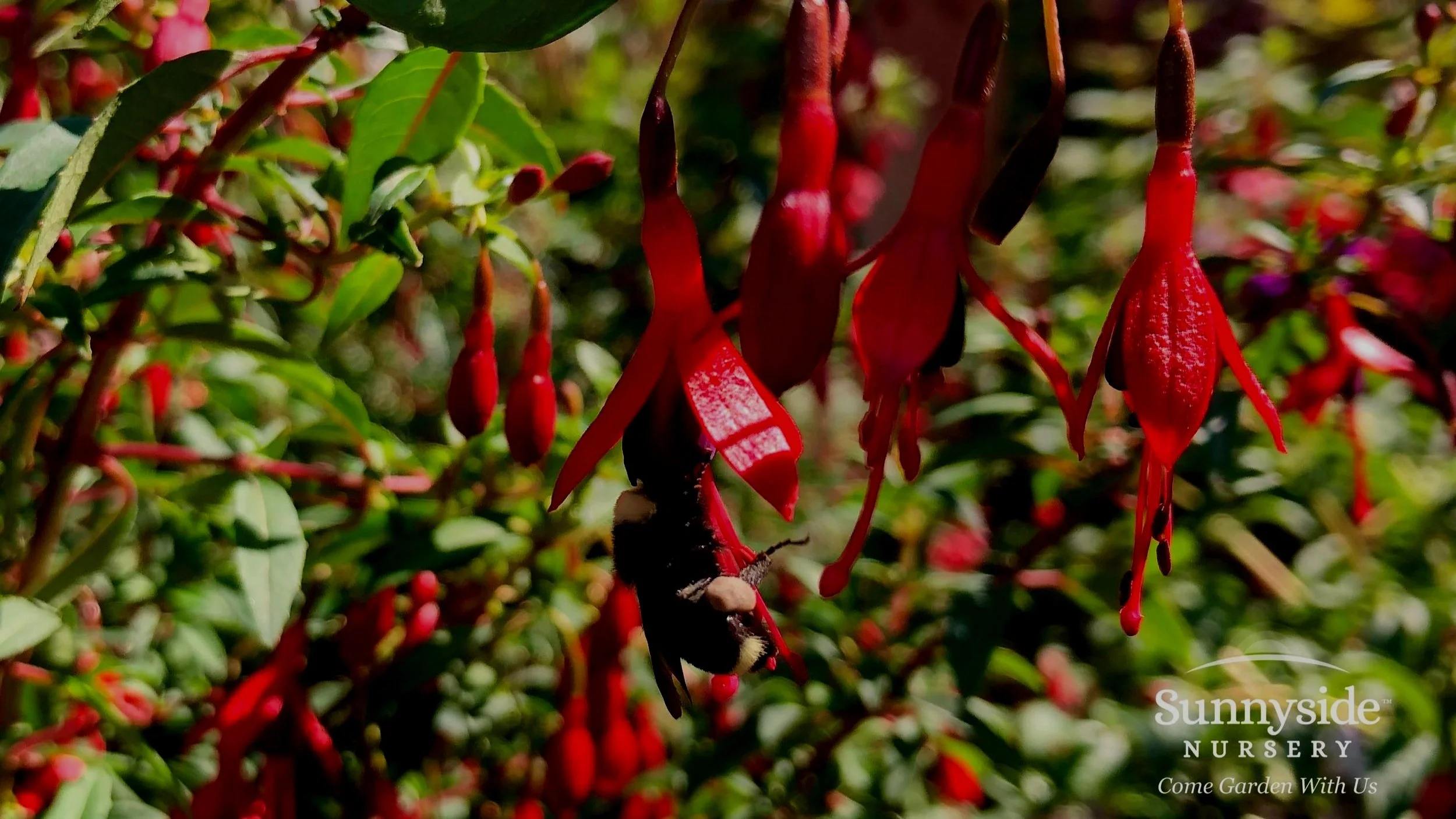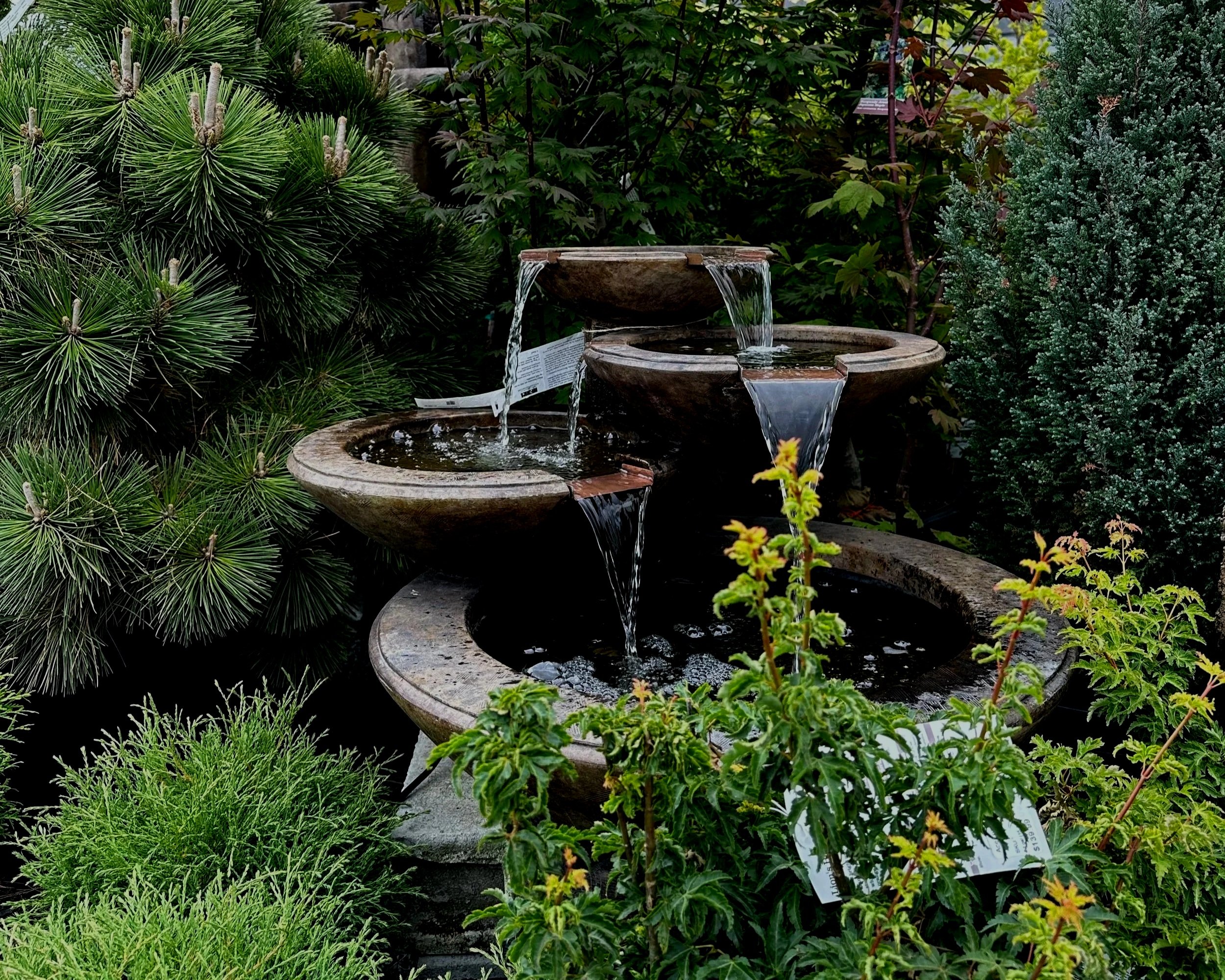I sincerely hope you are enjoying the onset of summer sunshine, and perhaps celebrated the summer solstice last week in style. Nothing beats being out in the yard until nearly 10 PM working without a headlamp, enjoying the cool evening air and taking in the peaceful sounds of dusk. Or for others like me, perhaps getting in a few more holes of golf and actually seeing your golf ball go into the hole after 9 PM. Ahhhh… gardening and golfing in the northern latitudes. Extra time outdoors, doing anything, soothes the soul!
Every June I seem to stand on my soapbox and preach about going natural in the garden and the importance of pollinators to our ecosystem. I apologize if I offend anybody, but my hope is that as you ponder choices in your own landscape, you consider the effects on our native bees, butterflies and hummingbirds. To take it a step further, consider the kids, pets, birds and all of the native creatures that visit your garden. The point is simply this: using systemics, neonics, or chemical solutions for plant issues and weeds harms everything. Please try to do the right thing by gardening safely and using both natural products and practices in your landscape oasis. Ask for help with this at your local garden center and allow knowledgeable staff to steer you in safe directions.
Now that I have done my yearly begging for folks to go green in the garden, back to plants… Every season is filled with perennial interest, and outstanding options are out there for any garden location. The summer takes this to another level as the plethora of perennials to choose from can be overwhelming. There is one huge difference between now and when I started doing this some 30+ years ago… the plants are simply better. Don’t get me wrong, this old guy likes some old school flavors and that will never change, but modern breeding over the decades has improved vastly and many cultivars of traditional perennials (and shrubs for that matter) are simply better. Longer or repeat blooming, tidier habits, better foliage, improved disease resistance, added fragrance… these are just a few of the improvements breeders strive for and after their seemingly countless trials and tribulations, we get to enjoy the benefits.
If you ask me, most summer perennials these days rival annual plants in their propensity to bloom. It is up to you as a gardener to go a little OCD and do some summer deadheading. This always lets a plant know that it is not time to go to seed just yet and to please kindly bloom again. This is not the case with every single perennial, but with many of the popular choices it surely rings true. Here are a few plants to seek out on your next garden center visit…
Hardy Fuchsias and Hostas: If you have partial sun to shade, nothing will ever beat the long blooming season of hardy fuchsias, period. For some June/July flower power, Hostas of all kinds bloom are a great choice. Both are hummingbird favs, they pair well together and some Hostas are even fragrant and definitely have lovely foliage as well.
‘Sunseeker’ Coneflowers: The choices for Echinacea addicts like me keep expanding, and no matter what color you like there is a perfect coneflower to match. The new ‘Sunseekers’ series is excellent, with very full semi-double flowers in vivid colors on compact plants. Simply pick your color, plant, and enjoy!
Penstemon: These are referred to as “Beardtongue” and adored by hummingbirds and bees. Varieties like ‘Red Riding Hood’, ‘Harlequin Magenta’, ‘Pristine Nightshade’ and many others are striking. Deadhead these a bit and they will flower most of the summer. Watch these carefully for a show - bumble bees often get lost in their tubular flowers, then the hummingbird dives in for nectar, pausing mid-air for the bee to get out of the way!
Hyssop: Modern varieties of Agastache flower, and then flower some more in the summer heat. I enjoy these in multiple locations in my own garden and also love the fact that my resident rabbits leave them be. Lots of good ones are out there, but maybe try ‘Poquito Orange’ or ‘Summerlong Coral’, both for the bright color and tidy/compact habit.
Verbena: I recently started using the perennial versions of these as a sort of filler plant in my sunny borders and I am loving the added color. They will bloom until frost and trail a bit, eating up some empty spots while attracting pollinators all summer long. The ‘Endurascape Series’ is the way to go here as you can do purple, pink, or red. There is always the classic variety ‘Homestead Purple’ as well to use. Deadhead these a bit, feed them, and they will bloom as strong as almost any annual would.
Hardy Ice Plant: Varieties of Delosperma continue to captivate my gardening eye. If you have hot spots in rockeries and need drought tolerance, give these a try. There are some outstanding new ones this year including the ‘Rock Crystal’ series (which comes in hot red, orange, or purple) and the ‘Ocean Sunset’ series (the best one is ‘Orange Glow’). These fascinating flowers open in sun, close without sun, and bees love them - so do I since they need very minimal care.
Some “old school” worthy options should be considered as well. These may not repeat bloom like some others mentioned above, but they still pop with summer color and are superior pollinator magnets. Liatris (Gayfeather) is one on my favorites, as is Solidago (Golden Rod). Butterflies and bees adore both of these in my garden. There are always Cape Fuchsias (Phygelius) as well, and these do bloom again and again for our hummingbirds to enjoy. Maybe a bright red ‘Winchester Fanfare’ Cape Fuchsia will catch your eye like it did mine. All of these love sun, well-drained soil and are super easy to cultivate.
As we near the end of June and the official month long celebration of pollinators comes to a close, this gardener says “keep it going!” Not much is more important to our ecosystem’s health than pollinators, and by adding summer perennial color you are continuing to not only persuade them into visiting your yard but you are also servicing their needs. By avoiding chemical use and going the natural route with sprays, fertilizers and amendments you are doing our planet a huge service. All of us can make our gardens safe havens for pollinators and beneficial insects by simply making the right choices and doing the right thing. So plant some perennial color, in both and sun and shade, then sit back and enjoy the garden visitors that come to visit your very own little slice of gardening heaven.



